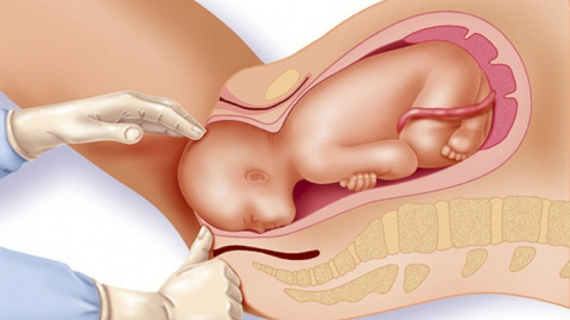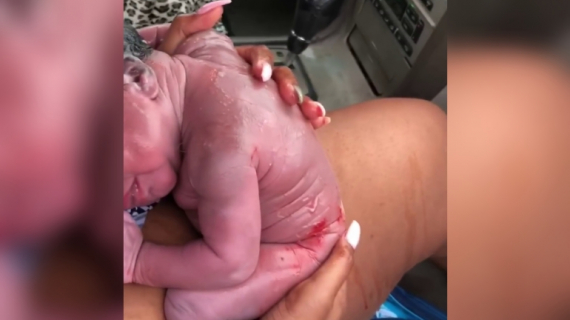Woman Gives Birth to Baby in Car
An amazing video of a woman giving birth in the passenger seat of the family car is burning up the Internet. This is the incredible moment a woman gave birth in the front seat of a car as her husband raced her to hospital.
How to give birth in your car in 12 easy steps?
1 - Remain calm. Usually when babies come this fast, all is well and proceeds smoothly.
2 - Pull over. You and your partner will both be nervous, and this is not the time to have a car accident!
3 - Call 911. They may remain on the phone with you until the baby arrives and can provide you with valuable instruction. Of course, follow their instructions over the ones provided here! Their instructions may be more specific to your circumstances.
4 - Grab whatever clothing or blankets you have in the car and place them nearby.
5 - Allow the mother to assume whatever position is comfortable for her to give birth in (she’ll probably just do so naturally—you won’t have to tell her!)
6 - Have your hands ready to catch the baby or ensure that the mother is close (within 6-12 inches) of a soft surface like the seat of the car, which can also help to catch the baby. The baby’s head will come out first, and then there may be a pause (while waiting for another contraction) before the body emerges. You don’t need to do any fancy maneuvers—just make sure the baby doesn’t fall on the floor!
7 - Do not pull on the head, body, or umbilical cord if you happen to notice it around the baby’s neck. Know that most babies will deliver just fine right through the umbilical cord if it is around their neck; you can unwrap it once baby has been delivered.
8 - Once the baby has emerged, place it skin to skin with the mother for warmth, and cover them both with a blanket, shirt, or jacket. Simultaneously dry the baby.
9 - If the baby does not breathe or cry right away, don’t panic. The baby is still receiving oxygen from the umbilical cord. Remain on the phone with emergency services or call them if you haven’t yet. In the interim, vigorously dry the baby (including wiping the nose and the mouth) to help stimulate breathing. Focus on keeping the baby warm on the mother’s skin.
10 - A gush of blood and fluid will follow the baby. Remember that the amount of blood may appear to be more than it actually is since it is mixed with amniotic fluid.
11 - The placenta takes 5-30 minutes to come out. By the time it is ready, emergency services should be joining you. In the meantime, do not pull on or cut the cord. The baby can remain attached to the umbilical cord until after the placenta has been delivered.
12 - Make your way to the birth center or hospital by ambulance so everyone can get checked out, and congratulate yourselves on a memorable birth story!














